Issue Number 35, Winter 2016-17
Contents
- Extinction by Elizabeth Herron
- An Owl, an Offering by Kerry Neville
- Collusion by Ron Riekki
- The Bear by Susan Mitchell
- Drowning Kiribati by Muriel Nelson
- From There to Somewhere Else by Taylor Graham
- Headlights by Keith Dunlap
- Inle Lake by Dov Weinman
- Lake Dharma by Cheryl Dumesnil
- Lichen by Justine McNulty
- Lost in the Woods on Cascade Head by Scott Starbuck
- Once Were Birds by Daniel Hudon
- Puja for Saraswati by Anna Citrino
- Red Sails by Maja Lukic
- Silences by Philip Jarrod Jason
- The Buffalo and the Red Rock by CB Follett
- War in the Grand Canyon by Clinton Crockett Peters
- Aurora by Caroline Goodwin
- The River Eyot by Caroline Goodwin
- When The Rain by Caroline Goodwin
Archives: by Issue | by Author Name

Extinction
for Paul Shepard
by Elizabeth Herron
Elizabeth lives in the Atascadero Creek watershed, twin to the Laguna Watershed, both tributaries to the Russian River in Sonoma County, California, where salmon spawn and where coyotes and black-tailed deer are among her closest neighbors.

Even cold erodes, and the ice
that held itself in glacial cleaving
grows eager to lie down in the sea
where the great bears will finally sleep,
sliding quietly into the depths.
Their bones roll the bottom
in layers of darkness. What is left
besides light descending
into blue shadows, the billowing
curtains of salt, the slow heft of the sea?
How can we let what is lost
settle of its own sacred weight
into the secret grief, the emptiness
we mistake for something missing
in ourselves?
© Elizabeth Herron

An Owl, an Offering
by Kerry Neville
Kerry lives in the French Creek watershed forty miles south of Lake Erie, source of prodigious, lake-effect snow in the winter.

Yesterday, I watched a Great Horned Owl practice her flying from the end of a creance line, her once fractured wing now strong enough to carry her across the soccer field. A farmer found her over the summer with one end of a string knotted around her wing and the other end attached to a telephone wire. Who knew how long she’d been dangling upside down like a broken, abandoned kite? Carol, the rehab center’s director, explained that the fracture was likely from either the impact or the struggle. Weeks passed before she was certain the owl would survive as birds, like humans, experience shock after trauma (in animals called “capture myopathy”); however, in birds and other animals (rabbits and deer), this can be fatal, rapidly burning up all available glycogen stores. These animals can drop dead at the moment of trauma (e.g., caught in a “humane” cage or a leg caught in a trap) or it could take days and weeks for organ failure.
This owl survived and was magnificent! Ombré feathers moved from gray to brown to ruddy red to white, the way a desert rock face changes with the light. Feathered tufts, like flaming antennae, grew from each side of her head. Her face was a great disc confined between dark parentheses. And her eyes were big, yellow honey moons. She swiveled her head, a perfect radar dish, and fixed her gaze on me. Was she wondering if I was predator or prey?
At the rehab center, Blake, a volunteer, strapped jesses around the owl’s legs; the rugged leather anklets, more hipster than falconer, were fastened to the one hundred and fifty foot long paracord. Jess, another volunteer, cradled the owl, a strange, otherworldly infant, while Blake zigzagged the line on the ground to prevent it from spooling out too fast, and to control the owl’s flight speed. The owl was a little like a ventriloquist’s dummy: its body still, its head wheeling back and forth, eyes wide open, beak clacking in warning. In the sky, two crows circled us, cawing in protest over our invasion of their territory, but more over the owl which they had spied from their perch in a nearby pine tree. Great Horns make meals out of crows. “We’ll have to leave if they start dive bombing her,” Jess said.
When the crows finally scattered, Jess launched the owl: one hand on the bird’s back offering a steadying momentum, the other under its taloned feet, thrusting them forward. The bird beat its broad wings in rapid succession, gaining altitude, and then opened them into a four- foot extension. Each beautiful, tough feather worked with the others, flapping and gliding, flapping and gliding. The leading, serrated edge of an owl’s flight feathers, or flutings, muffles the rush of air over the wings, allowing the owl stealth flight. Carol, the director, had earlier explained how birds die from feather trauma: the long, vertical barb that runs down the center of a feather is a straw supplying blood to the smaller, horizontal barbs, barbules, and hooklets; if the feather breaks and the wound doesn’t clot quickly, the bird can bleed out. “It can take years to rehab a bird with trashed feathers,” she said. I never considered a feather’s workings beyond its general flight purpose, or maybe my curiosity ended with aesthetic admiration of the white and gray seagull feathers I’d twirl between my fingers at the beach, or the shimmering blue jay feathers I’d find in my backyard.
Beautiful and necessary. Delicate and tough.
The owl picked up speed; the line tensed and went taut. The bird tumbled to the ground, startled out of her intention, clearly the line of maple trees across the field. The crows swooped in again with their vociferous complaints. The owl waited, feathers puffed, clacking loudly, necessarily hamstrung by the line. In a few weeks, the owl will be released back to home ground in Erie, back to instinct and chance without the safety of the line or meals of pre-butchered rat. Before Blake launched her for a second run, I ruffled my fingers across her head, through the soft, bristle feathers. The owl turned her head and stared at me, blink! blink! and then turned away, eyes back on the blue sky. She didn’t want to know me at all. That was a reason for joy.
© Kerry Neville
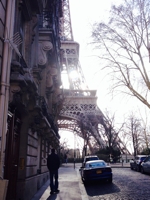
Collusion
by Ron Riekki
Ron lives in a central Florida swamp with cypress and white ibis and the occasional sand hill crane and seven-foot alligator.

I walked into the hospital and the nurse said, “Get her out of here before she dies on me.”
It destroys hospital statistics when patients die.
The nurse could argue that she wanted the patient to be around family and not E.R. ruins.
When I transport patients to hospitals, hospices, homes, I look out the windows. When the patients are stable, I glance at the road, the side of the road, the woods that fill with night, become soaked in moon, and I see absence.
A Tallahassee judge recently ruled Florida black bear hunting as legal.
How many black bears are in Delaware, Hawaii, Iowa, and Indiana combined?
Susan Mitchell’s poem “The Bear” opens with a bear dancing and then it becomes just an image of a bear, lost to memory.
There are no black bears in those four states.
Ten black bears in Rhode Island.
Fifty in Alabama, according to blackbearsociety.org.
When I go to work, I pass by a gun store that changes quotes on its sign every week, saying things like, “It’s Father’s Day, buy him a rifle” or “All we are saying is give guns a chance.”
When patients seem like they’re dying, you can feel a sense of controlled panic coming from the EMTs. You can feel a hint of brilliant fear in their voice when they yell up to me that the blood pressure keeps rising, or falling. The worry is when numbers suddenly change. You don’t want patients who are hypo- or hyper-. You don’t want brady- or tachy-. You want homeostasis, that perfect state of homoios and stasis. A word that came into being in 1926— just before the rice rat became extinct, just after the Kenai Peninsula wolf became extinct, just before the heath hen became extinct, just after the California grizzly bear became extinct.
Became.
From the Old English becuman, ‘to be or do something.’
The jarring of ‘to be’ with ‘extinct.’
I remember a patient, fever-filled, looking up past me, through the ceiling, up into the neck of God, deep into the accidents of angels, the way that their wings batter together to crack open death.
I wonder sometimes if all of the unseen hypothetical bears could be turned into one patient in the back of an ambulance, a solitary bear with ventricular fibrillation, a bear with a ballistic trauma, a sucking chest wound, how there might not be apathy then, how the natural inclination is always to stop bleeding, to continue breathing, to keep life.
In the military, when I was in 30 Foxtrot, a petty officer made me go around the building killing birds. I did my best to fake their deaths. I pretended to smash eggs, heads, but he watched me, insisted I kill. I went to a pastor on base and he asked if I was a consciousness objector. I told him that so much killing is done for sport, to cure boredom, to earn medals, to turn hate to smoke, to fight dead fathers, to try to please those who actually find no pleasure in death. I told him none of this. I simply said I wasn’t. I was afraid not to be. I was cryptology. I helped transmit messages of coordinates for death. I was young. After, I had survivor’s guilt. I had PTSD. I had to go to China, to get away from America. I did. I remember looking inside an ambulance in Shanghai and being amazed at how filled it was with nothing. Simply a bench inside. Traditional Chinese medicine doesn’t allow for the extravagance of bag-valve masks and double-A battery flashlights and nasopharyngeal airways that clutter American ambulances. They say that if a crash happens, the person most likely to get killed isn’t the patient, but the paramedic in back; they’ll be hit by so much flying debris—oxygen tanks and AEDs and life-packs—that they’ll have multiple accidents. Accidents on top of accidents. It’d be like being drowned by acid rain and water pollution and climate change all at the same time. It would be like being hunted by semi-automatic rifles that shoot over a hundred rounds a minute.
How many black bears are in Illinois, Kansas, Nebraska, North Dakota, and South Dakota combined?
I once transported a gunshot victim who had severe diarrhea. It was the fastest I’ve ever seen my partner drive. He was panicked with worry simply because he didn’t want to deal with the smell.
What are the five senses of extinction?
What is the odor of vanishing?
I think of statistics.
There are no black bears in those five states. Illinois has over twelve million people, no black bears.
Sometimes, when I have a stable patient and I know they’re doing well, I’ll look out the window for a few seconds and see marsh that seems so filled with sky, as if heaven has collapsed onto earth, as if happiness lies in the breath of water and I wonder when we’ll wake up, when we’ll breathe the air of the divine, instead of all of this wind so filled with collision.
© Ron Riekki
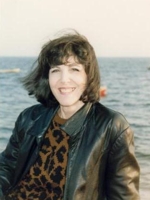
The Bear
by Susan Mitchell
Susan lives in Boca Raton, Florida, along the Atlantic Ocean.

Tonight the bear
comes to the orchard and, balancing
on her hind legs, dances under the apple trees,
hanging onto their boughs,
dragging their branches down to earth.
Look again. It is not the bear
but some afterimage of her
like the car I once saw in the driveway
after the last guest had gone.
Snow pulls the apple boughs to the ground.
Whatever moves in the orchard—
heavy, lumbering—is clear as wind.
The bear is long gone.
Drunk on apples,
she banged over the trash cans that fall night,
then skidded downstream. By now
she must be logged in for the winter.
Unless she is choosy.
I imagine her as very choosy,
sniffing at the huge logs, pawing them, trying
each one on for size,
but always coming out again.
Until tonight.
Tonight sap freezes under her skin.
Her breath leaves white apples in the air.
As she walks she dozes,
listening to the sound of axes chopping wood.
Somewhere she can never catch up to
trees are falling. Chips pile up like snow.
When she does find it finally,
the log draws her in as easily as a forest,
and for a while she continues to see,
just ahead of her, the moon
trapped like a salmon in the ice.
Susan Mitchell, “The Bear” from The Water Inside the Water. Copyright © 1983 by Susan Mitchell. Reprinted with the permission of Wesleyan University Press.
Source: The Water Inside The Water(Wesleyan University Press, 1983)
© Susan Mitchell

Drowning Kiribati
by Muriel Nelson
Muriel lives in Federal Way, Washington, near Puget Sound and West Hylebos Wetlands Park, one of Puget Sound’s last remaining peat bogs.

A map of Kiribati shows blue ocean. That’s it.
Blue ocean with a dot.
Press it and you see
“Map of Kiribati.” Three
meters high, its highest. Home
for some
for now.
Mauri,
welcome
to where we’re from.
Welcome to what you’ve caused,
to salted homes we’ve nearly lost
where spirits with no word for mountain
live, still—our spirits of the coral, the coconut, the palm.
To the rats, the dogs, the pigs, the oysters, the church,
to people missing shacks, shoes, limbs, and shirts—
the water comes, three-sixty views, three king tides
a year. We talk of arks, of Fiji, as water comes inside
what you call squalor or riddance
what we call Kiribas,
our only home.
© Muriel Nelson
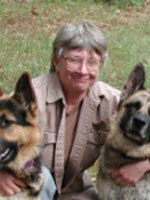
From There to Somewhere Else
by Taylor Graham
After 24 years between forks of the Cosumnes, Taylor now lives among tributaries of the American River.

These weedy fields
bordered by 2-lane highway and country roads,
industrial garage behind a chainlink fence,
and the old lime kiln now refuse-transfer station;
these vacant fields, wasteland of star-
thistle, greasewood, scrub oak and Queen Ann’s
lace in season; a placeholder for development.
I’ve seen it coming; and in this morning’s paper,
these useless fields proposed to be
parkway saturated with sidewalks, signals,
bus stops, parking and access to El Dorado Trail –
once a railway, now a foot and bike path
skirting these vacant fields
I know so well. I’ve walked my dogs here,
finding game trails through coyotebush that stays
vibrant green in bone-brittle summer.
These derelict fields, buffer to the Trail
with its oak woods and marshy little creek,
dry except in the cold days under branches bare.
Birdsong. In the newspaper, no one spoke
for these weedy fields, but
folks opposing the new parkway didn’t mince
words: pollution from old industry. Core samples
will be analyzed, impact studies made.
For now, I’ll walk these empty fields
where deep in the brush, I happened on a clearing;
silence in the midst of coyotebush in festive
winter bloom, the short sun just setting.
© Taylor Graham

Headlights
by Keith Dunlap
Keith lives on a street where all the houses have foundation cracks. The houses sit on landfill and abut an ancient stream depression which, if it rains hard enough, still runs to the shallows of the nearby cove.

The rain so unrelenting that the rain
and the sound of rain are one pragmatic roaring,
a cataract through which the logging truck
ahead of us laboriously climbs;
on one side, the blur of an angry forest
crowding as close as it can,
like a mob pressed against a chain-link fence
to watch us slowly die;
on the other side, we can only guess
that the precipitous decline is a bottomless well
into which our car could be tossed like a coin.
So why then does my husband persist
in trying to pass the lumbering truck,
as if each invisible moment is a torture
from which he must immediately escape,
pulling out in suicidal hope
that nothing is coming our way?
Previously published in the author’s collection Storyland from Hip Pocket Press, 2016
© Keith Dunlap
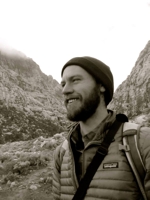
Inle Lake
by Dov Weinman
Dov lives next to the sea and in the shadow of Mt. Panamao on Biliran Island in the Philippines. Waters from the Badiang River feed the many water falls and terraced rice paddies scattered throughout the rolling hillsides.

with strong leg wrapped around
the boat's paddle,
impossible looking and elegant,
his opposite foot keeps firmly rooted.
the paddle-leg
swirls in silent circles,
guiding the vessel through
the freshwater lake in central Burma
and allows his practiced hands
to work the cumbersome, conical net.
head lowered,
his eyes covered
by the low brim of his bamboo hat,
his Shan-dress
is silhouetted against the falling sun
like a dark and graceful crane.
his small boy peers at me
from the other end of the boat,
and i wonder if the slash and burn silt
washing down from hillsides
will allow him to grow into an Intha culture
that is of the same world as his father.
© Dov Weinman

Lake Dharma
by Cheryl Dumesnil
Cheryl lives amongst the ghosts of a walnut grove, near a blackberry-choked creek, where the calls of kingfishers, nuthatches, hummingbirds, and crows spike the morning air.

You arrive at the lake, expecting
to meet grief on the trail.
Instead: a fleet of white pelicans
patrolling the shallows, steam
rising off the water glow.
Cormorants on the watchtower
moan and tick, indifferent
wings shrugged toward the sun.
Not even the day moon, having
dusted off last week’s rusty eclipse,
cares to hear your story
of a marriage slowly crumbling,
a young friend lost to cancer.
Then another. And another.
This whole forest depends
on that felled tree rotting into
home for salamander eggs,
centipedes, six varieties of moss.
Black phoebes rattle winter
thistles, swollen throats percussing:
this is, this is, this is . . .
Appears in the author's book Showtime at the Ministry of Lost Causes (2016)
© Cheryl Dumesnil

Lichen
by Justine McNulty
Justine currently lives in northeast Ohio where the Cuyahoga and Chagrin Watersheds meet. However, she has spent most of her life in the southwest region of the state, near the Mill Creek Watershed, close to the Kentucky border, where she lived among rolling hills and thick forests.

Flecks of dry, cracked paint, tissue paper-brittle and parched with age, lichen clings to trees and rocks and stumps, pale green as a morning fog. The color seems to suggest that this is vegetable, but it is neither this nor animal. It is made of millions of bacteria swaddled in filaments of fungus, giving and taking life from one another, a combination of two or three living beings that have come together to create a solitary creature, living and flourishing in a symbiotic relationship that spans eons. Because of this synergetic relationship, lichen has no common ancestor, no lineage, and therefore is not a “species,” but something different, something unidentifiable.
These empires of fungi and fauna glow pale in dark woods, stretching across creaking boughs like dragon’s scales, puckered, frail. Being among the oldest living things on earth, lichen have been used by humans to date their own histories, to make sense of the churning undulations of the centuries, to measure what they have gained against what they have lost. Watching, stoic as ancient gods, lichen cling to the other observers—trees and rocks, mountains and the mosses that run along the moist, sloping sides of riverbeds—and tally the millennia.
Plant nor animal, ever vigilant, lichen hunker down and breathe in the putridity of humanity, the smog of civilization soaking into its pores and clogging them like a thick bile, seeping down into its roots and rotting them from the inside out.
Lichen, will you no longer catalogue our triumphs, our failures? No longer keep watch over us, our vigilant sentry? Your creaking lids slide closed with a hush of papery thinness as you slip back into your perpetual daydream, your eternal doze, tucked into the cool and damp, clinging to the sweet rot of soft wood, to the cool, mineral tang of a rock’s round back, and wait.
© Justine McNulty
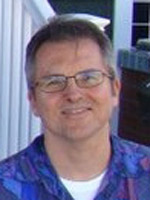
Lost in the Woods on Cascade Head
by Scott Starbuck
Scott travels between the north Oregon Coast, Columbia River Gorge, and his teaching job overlooking The Rose Creek Watershed in California.

I pause in creek bottom
of an alder thicket
to drink in cool water
and reflect on classic way
I got into this mess
merely by following deer
as dark approached.
Last night it was 28 degrees
and I am wet,
soaked clear through.
Glasses lost to a branch
and down to one boot,
I laugh and think
that I, the outdoorsman,
may die tonight
and how, whether I do or not,
blurred stars
look like Christmas lights
in giant Sitkas.
This poem appeared in Riven Poetry Journal and Hipfish under the title “Lost in the Woods.”
© Scott Starbuck
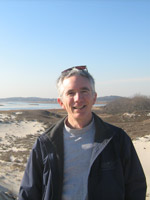
Once Were Birds
by Daniel Hudon
Daniel lives on the East Coast, not far from various nesting sites of the endangered piping plover in the Charles watershed.

I dreamt that dozens of extinct birds flew up to my window to have their portraits painted and those who couldn’t fly like the Great Auk, the Dodo, the many Pacific Rails, somehow got themselves up my back steps, through the gate and knocked on my back door. Excellent birds, I thought, how I missed them. Such a din they made, each wanting their turn, boisterous as children blowing bubbles. I had never been a painter – I once dreamt of taking lessons with Picasso – and was surprised to have this honor, the way one is surprised in dreams at some newfound ability that you then take in stride, like flying, and dashed around looking for my materials. All I could find was a black felt marker, no paintbrushes, and near the bottom of a tower of books I found my old sketchbook untouched since an afternoon years ago when I was hiking above a waterfall and drew my boots into the picture to show I was reclining and thereby content, and when I rushed back to the back door I saw the Great Auk now at the bottom of the steps, waddling away, followed by the Dodo and the rails, and the other flying birds, the Hawaiian o’os with their long sliver-of-crescent-moon bills, the much-maligned caracara, the Carolina parakeets, the passenger pigeon, once so close I could feel their wingbeats now scattered into the sky. Wait, I shouted, don’t go, but they kept on leaving and before long they were gone. Sometimes I think I’ve never woken from this dream, and the long silence that followed.
© Daniel Hudon
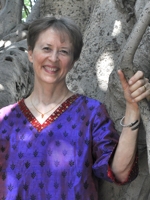
Puja for Saraswati
by Anna Citrino
Anna grew up in the San Diego River watershed. She taught abroad for 26 years in six different countries. She currently lives at the edge of Moore's Creek in the San Lorenzo-Soquel watershed of Santa Cruz County.

The village men brought her from the temple
in the back of their bicycle rickshaw, Saraswati,
the goddess of knowledge, music and art.
With her pale face and white gown and gold
paper decorations, she sat calmly on her wooden
“A” frame as the men wrestled her from her seat
and hefted her to the Yamuna’s edge, the river’s
wide skirts spreading toward us, air heavy
with sulfurous fume. Stocking-footed, the men held
the goddess above the bank, “Ek, do, teen,” a shove,
and in she fell, face first, kerplunk into the water
and mud. Then, splat, splat, splat, just like that,
three plastic bags stuffed with marigolds followed.
The men climbed into the rickshaw and drove away. Done.
Down river amidst decaying petals, plastic detritus
pooled around their bodies, lie the previous
Saraswati puja forms—wooden frames elbow-angled
above the water’s surface. Goddess of music, and art,
mouth pressed into the mud and muck, her white swan
drifting down a current of chemicals and sewage,
how does she go on singing?
© Anna Citrino

Red Sails
by Maja Lukic
Maja lives in Manhattan, a few brisk and cold steps away from the East River.

I
The ocean is juicing into acid
but we swim its gold acrylic
for hours, for years. A sunset
spatters bloody chimeras & speaks
of a future to reckon: red sails
on the sea when the light drains,
a forgotten sailboat on the sea—
it’s the small boat my father had
named after me, years before the
wars that tossed us from shore.
The light bleeds out a little
sodalite glow & night swims in,
bobbing a plastic blood moon,
red rust of everything gone before.
It’s quiet. A salt grain glinting,
the eggshell glow of an eyeball
squinting in the black—all things
shimmer toward death in these waves,
going the way of honesty. Red sails
floating still, the sea is veined
all over & each wave or ripple
a sad soul bursting capillaries.
II
Swim & consider passage: when
the Great Dying slinks back for
its unfinished, it will be in the form
of winter density & sea butterflies
cracking into translucence—
but the melancholy pteropod
understood erasure before we did.
Consider the vague mythology
of distinction between dark & light
& then consider that twilight
is just the light stuttering out
a little lost humanity.
III
Is it life—is it the state of inhabiting a final body,
swimming perpetually in the red splay?
This sea is no place to wait for
the end but we knew that already
& now there is no other but the bank,
the forest, which is nowhere,
nothing but some anorexic
trees ghosting into other trees,
a million bristles standing up
& perplexing infinity at the end
of which is a blank space
& a dream sitting in a chair.
© Maja Lukic
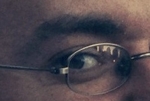
Silences
by Philip Jarrod Jason
In the past few years, Phil has spent time breathing the fog that rolls across the San Francisco Bay and walking the shores of the Long Island Sound. He currently lives about 100 feet from a boulder that was left behind by the glaciers of the last ice age.

not too long ago, curious people sat around and stared
at things in solitude. there was nothing to read. no one
to worship. there was the self they knew in silence. there
were the questions that rose up from the inexplicable. they
contemplated patiently and gave up. there was nothing
to know and they were satisfied. then came the printing press
and a new kind of silence crept across the world.
at night, some people remembered the old ways.
then someone invented the lightbulb and smothered the stars.
then television. then pop stars filled the atmosphere. then the
mind became a pop star. then there was so much sadness and
weight loss. then good silence died. then the bees
found a way across the universe and didn’t say goodbye.
they left behind just enough honey for us to fight over and
a third kind of silence. no one realized that we loved the bees.
it wasn’t in any books. it wasn’t even waiting for us to notice.
it was something that was there for us if we wanted it, like
a silent telephone of the heart that knows exactly who to call
the moment you pick up the receiver. you can use it
to call someone in the old way. the calls don’t cost anything,
but if you talk too much, you become disconnected.
© Philip Jarrod Jason

The Buffalo and the Red Rock
by CB Follett
CB lives in the Mt. Tamalpias watershed in Marin County, CA.

There was a time when the land ran black with buffalo, when their hooves cut the ground into pocks of dry holes, when the dust of their passing occluded the sky, and the sun was lost through the long afternoons, turning the air to a rust red, and the noise was like rivers headlong to the sea, shaking the continents, and the buffalo were held sacred, driven deep in the myths of the plains, supplying robes and tents, meat and weapons, wool and stories. Their heads became headdresses; the people wore their horns, the poll, the shaggy masks in ceremonies, calling the gods out of the hills, and the red rock gave up its color for the walls of caves, for the dusting of petroglyphs on high canyon walls – the buffalo owned the land and by their grace shared it with two-legged brothers and sisters. If a white buffalo moved with the herd, she came from the North, carrying prayers on her shoulders. It was an honor to walk with her, to sort her breath from your own, the white edges of her eyes, the thick white coils of her mantle, the soft white hairs of her belly. She carried the voices of the gods, brought snow to rest the land, brought out of the red rock, tender shoots from the lick of the wind, corn from the sun, and during those seasons when she did not move with the herds, she whispered her stories on the wind to carry for new generations of the animal-man, but when man took and took more without thanks, without reverence, the white buffalo was seen less and the people were not strong enough, savage enough to protect the herds; and the thunder of hooves, the hard dance-points against packed earth began to diminish; the voices of the gods no longer carried on westerlies, no longer heaped on the wise shoulderbones of the elders, were not passed to strong youth, and the song of the buffalo was lost to the plains, and the pale men who began to spread like butter over the land of the buffalo could not see the spaces no longer filled by musk and whispered stories, did not know that the loss of nations hung in the air.
© CB Follett
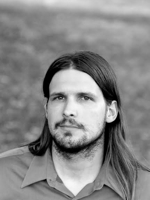
War in the Grand Canyon
by Clinton Crockett Peters
Clint walks his dog along the urban creeks of the Blackland Prairie remnants of North Texas, but he calls home the Llano Estacado Caprock, where the sand-blasted creeks, when they actually have water, feed into the North Fork of The Arms of God River.

We went for Thanksgiving in 2006, cutting class, driving the 18 hours to the South Rim of the world's largest hole in the ground. Eight days we hiked to the Colorado River and back, a conservationist group, pacing, singing, doing yoga, telling Chuck Norris jokes, and cutting down a highly-invasive non-native (Russian) thistle we called Tammy.
Tamarisks. Salt cedars. Evergreens whose niche is low-lying dry areas. It is thought they drown soil with sodium, creating a halo of desiccation, but this seems to have been a misunderstanding. We were 20-somethings, young adults swayed into combat. We went for the excitement, the self-serving, do-gooder mantra of a pilgrimage to bring down an unstoppable invader. Righteous purification electrified us.
We traversed across the canyon, cutting through the red rock shale and scrub, and nudged against cliff faces, staring down a mile. Then we came around a house-sized boulder and beheld a golden and crimson willowing tree that fanned in a light breeze. It was the largest life form in sight, within 15 feet the only life. But it seemed suited to the Southwest, against the backdrop of the canyon and a banded sunrise, earth tone bark, shaggy and sharp.
We sawed Tammies to bloody nubs and doused them in a toxin, for which one needed gloves and face bandana. Otherwise a Tammy, we were told, would grow trunks from its amputation, a Hydra from Siberia.
We slaughtered hundreds of trees in one sub-canyon, ranging in size from finger-thin to one that knuckled around a rock large enough to smash a car. It made a nuisance of itself by growing against a slope, hiding its form. Leaving it was out of the question, as it only takes one stain to darken white sheets again. Eventually, someone cut all the limbs away and burrowed a hole in the trunk, filling it with toxin.
It could spawn clones by the dozens, we were told. But that hardly seemed the point. The effort was, I think, a take-no-prisoners, seek-and-destroy. It was the rhetoric and chemicals from WWII that gave rise to our herbicide industry, after all. Wartime attitudes accompanied those products to the shelf. Enemy, battle, and invader: words used in the armed aggression against unthinking plants in golf courses and canyons. Something that was and is a joy to young 20-somethings, as one of us said, who later shipped off to Afghanistan.
We were covering a landscape with a promise that we were acting beneficially. We had reservations: about the poison, about the fruitless hacking away at a misstep of a prior generation. But it's one of those compromises I run into as I debate using pesticides in my own garden or leave poison out for roaches that melt into my walls. I've found my quest for purity butting up against purity. Pure land, pure water, pure conscience. It’s a fanciful notion. Naive and violence-lusting, purity has led more people down canyons with tools of war than anything. It’s engrained in our culture, but no sage.
We had also packed in two gallons of poison, along with all our gear and food, axes and saws. We might as well have used it. Another kind of purity: the clean slate, waste-not-want not, bottom line. I don’t think the answer here is easy.
As we cut and sheared, Tammy needles began to lie in carpets around our feet, more than a few stuffed down my shirt collar. There was a sea of crimson on top of the gulch we'd been carving. The frail needles became fragments as we marched, dragging trunks and laying them lengthwise on high catches so the river wouldn't rise and let them seed downstream. The fragments became smaller as the hours wore on and our boots munched the needles into ash. As we reached the river bank, having slaughtered all we could, there was a coat of fine powder at our heels, a dust that looked uncannily like a shallow trickle of blood running from the top of the canyon to the raging river below. It was as if a great wound had opened up in the earth, and along its side lay the shattered corpses of Tammies.
I looked back at our destruction, my younger self not satisfied, knowing that in a side canyon over many more invaders waited and that in ten years our work would be erased, as I would, as the world would, forever vexingly impure.
© Clinton Crockett Peters
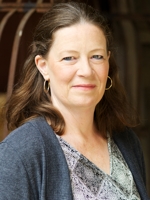
Aurora
by Caroline Goodwin
Caroline lives and writes in Montara, California, in the San Francisco South Coastal Watershed, with her heart and imagination firmly planted in the Baranof-Chichagof Islands Watershed of Southeast Alaska.

pinpoints and dust motes
emerald pincushion
on the windowsill, fabric
over the sky-light, pale
moss blowing in a high tree,
in a shadow in a hand, of
your child lifting the stone
for the tide pool and hermit crab,
giant green anemone, shore-light
and mantlepiece, photo
box made of birch-bark, photo
of the garment and the seam,
of the fireside and
the frenzied moth, silver
wing, silver needle through a blue
bead, after the last fish is cleaned --
© Caroline Goodwin

The River Eyot
by Caroline Goodwin
Caroline lives and writes in Montara, California, in the San Francisco South Coastal Watershed, with her heart and imagination firmly planted in the Baranof-Chichagof Islands Watershed of Southeast Alaska.

child at the circle
drawn in mud, willow
branch and shining fur --
humming under the surface
earwig and pillbug
cranefly and pearl --
heron at the tideline
stock-still, clam shell, thin
white lines, milk-thistle, quill --
hold out your hands
open your throat
here’s where the world slides in
© Caroline Goodwin

When The Rain
by Caroline Goodwin
Caroline lives and writes in Montara, California, in the San Francisco South Coastal Watershed, with her heart and imagination firmly planted in the Baranof-Chichagof Islands Watershed of Southeast Alaska.

when we watch over the beach
over the snowy plover
seeking shelter in the couch grass
when we hold our hands open
to the west and forget ourselves
in the narrow corridor in
filaments of sunlight that remain
when we detect the first
dry leaves along the pavement
scratching at our arms
and remember the blood
in ferguson in jasper in iguala
in our streets
when we pause when the trees
light up our living rooms with silver
tinsel and ornaments when we drink
the clear water the clean water
when the sky returns to its feathered
clouds and stillness and we come out
let us come out with our eyes open
and with our hearts prepared for both
the battle and the feast
© Caroline Goodwin